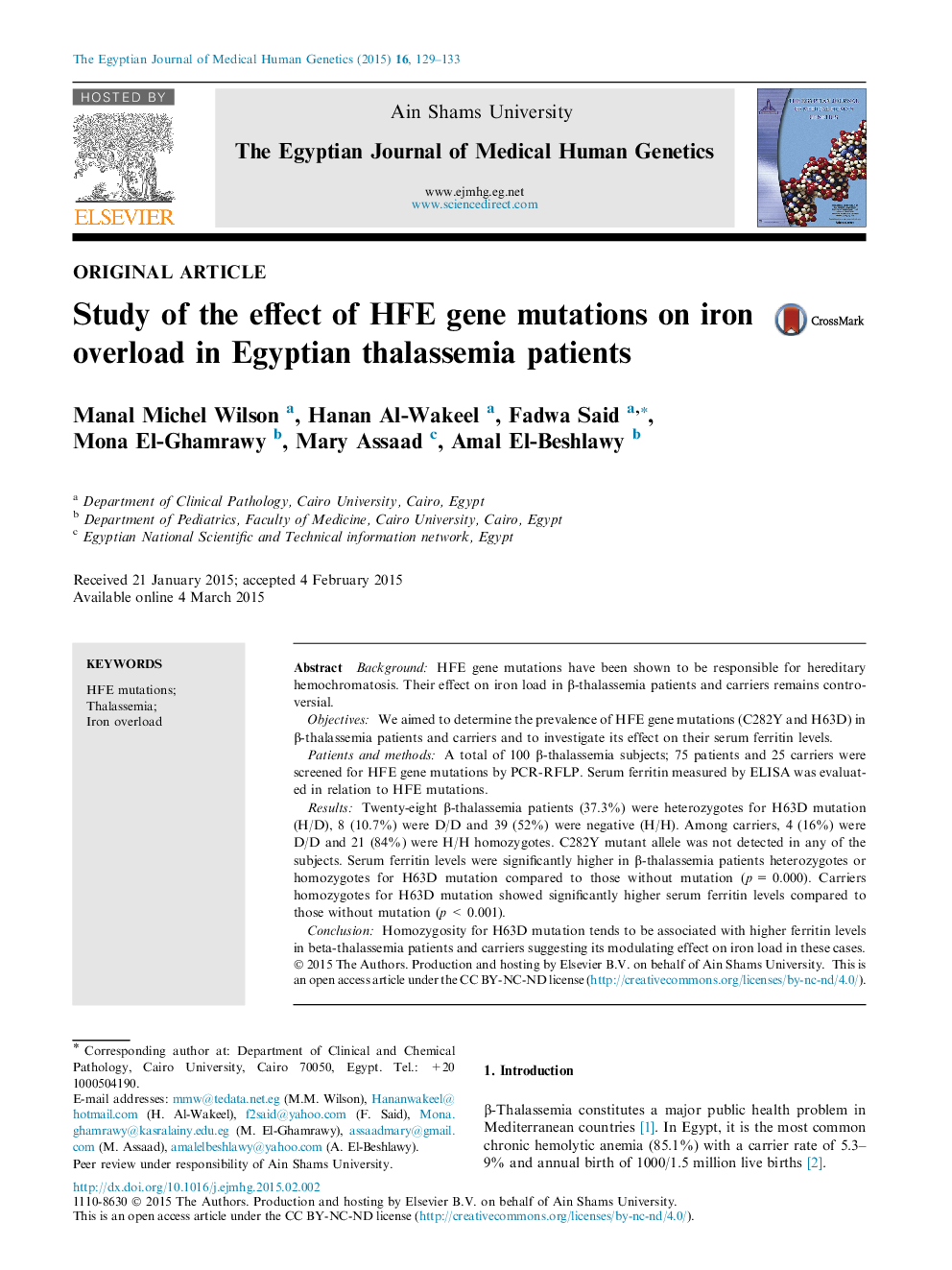| Article ID | Journal | Published Year | Pages | File Type |
|---|---|---|---|---|
| 2178079 | Egyptian Journal of Medical Human Genetics | 2015 | 5 Pages |
BackgroundHFE gene mutations have been shown to be responsible for hereditary hemochromatosis. Their effect on iron load in β-thalassemia patients and carriers remains controversial.ObjectivesWe aimed to determine the prevalence of HFE gene mutations (C282Y and H63D) in β-thalassemia patients and carriers and to investigate its effect on their serum ferritin levels.Patients and methodsA total of 100 β-thalassemia subjects; 75 patients and 25 carriers were screened for HFE gene mutations by PCR-RFLP. Serum ferritin measured by ELISA was evaluated in relation to HFE mutations.ResultsTwenty-eight β-thalassemia patients (37.3%) were heterozygotes for H63D mutation (H/D), 8 (10.7%) were D/D and 39 (52%) were negative (H/H). Among carriers, 4 (16%) were D/D and 21 (84%) were H/H homozygotes. C282Y mutant allele was not detected in any of the subjects. Serum ferritin levels were significantly higher in β-thalassemia patients heterozygotes or homozygotes for H63D mutation compared to those without mutation (p = 0.000). Carriers homozygotes for H63D mutation showed significantly higher serum ferritin levels compared to those without mutation (p < 0.001).ConclusionHomozygosity for H63D mutation tends to be associated with higher ferritin levels in beta-thalassemia patients and carriers suggesting its modulating effect on iron load in these cases.
